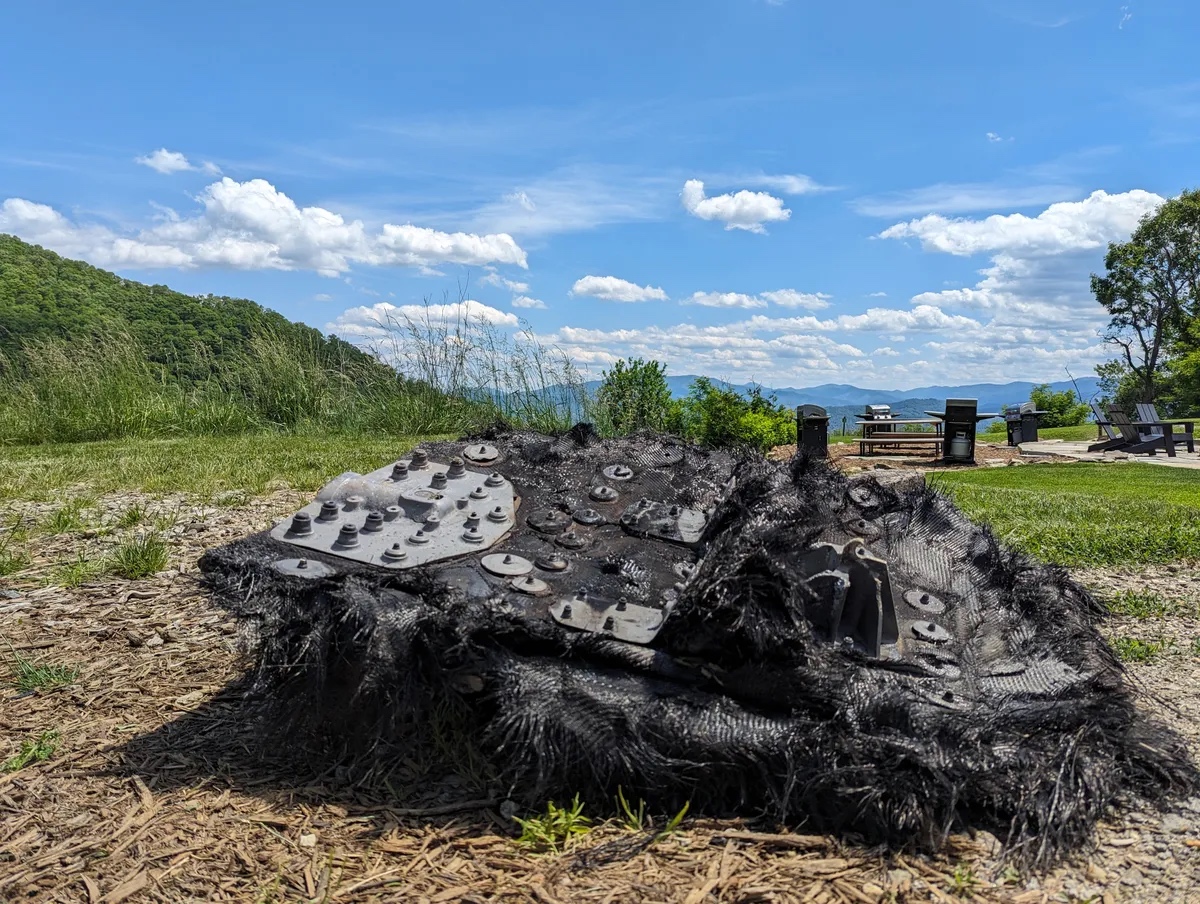Products You May Like
WASHINGTON — NASA and SpaceX are examining how to alter the Dragon spacecraft’s reentry process to limit the amount of debris from the spacecraft’s trunk section that reaches the ground.
On several occasions, debris from trunk sections of Dragon spacecraft, which are jettisoned from the capsule before the capsule performs a deorbit burn, have been found on land. They include debris from the Crew-1 Crew Dragon trunk, found in Australia in 2022; the Ax-3 Crew Dragon, which fell in Saskatchewan in February; and the Crew-7 trunk, fragments of which were found in May in North Carolina.
In August 2022, shortly after the Crew-1 debris was found in Australia, a SpaceX official downplayed the incident as an isolated case. “This was all within the expected analyzed space of what can happen,” said Benji Reed, senior director of human spaceflight programs at SpaceX, at a NASA briefing. “Nonetheless, just like we do for launches and any return, we look very closely at the data, we learn everything that we can and we always look for ways we can improve things.”
After the more recent debris sightings, NASA and SpaceX now acknowledge that improvements are needed. The agency recently stated that initial studies expected the trunk to burn up fully upon reentry. “NASA and SpaceX will continue exploring additional solutions as we learn from the discovered debris,” NASA stated.
“We did analysis back before Demo-2 and clearly the models don’t deal with the trunk very well,” Steve Stich, NASA commercial crew program manager, said in an interview after a Starliner briefing ahead of that mission’s June 6 launch. He said it’s likely because of the composite materials used in the trunk. “It’s almost like a thermal protection system.”
The solution he said NASA and SpaceX are looking at involves changing deorbiting procedures. Currently, the trunk is released before the capsule performs its orbit burn. That means the trunk can remain in orbit for months before making an uncontrolled reentry.
Instead, Stich said engineers are examining doing the deorbit burn and then releasing the trunk. That would provide more control of where the trunk reenters, ensuring that any debris that survives reentry lands in unpopulated regions.
“We’re in the process of doing that work right now,” he said. “I would love to have something in place next year if we can, but we’ve got to do all the right analysis. We’ve got make sure that it’s safe for the crew.”
The challenges of that alternative approach include the use of additional propellant to do the deorbit burn while the trunk is still attached and then figuring out how to best separate the trunk after the burn. Stich said engineers are looking at a couple of ways to do that that would result in the trunk going further downrange from the capsule on reentry, so that any debris would land in the ocean.
Concerns about the risks of falling debris have increased not just from the Dragon trunks but also a piece of an ISS battery rack that performed an uncontrolled reentry March 8. A piece of that rack, weighing nearly three-quarters of a kilogram, survived reentry and hit a house in Naples, Florida. The debris plunged through the roof of the house but did not cause any injuries.
On June 21, the law firm Cranfill Sumner LLP announced that it filed a claim with NASA for an estimated $80,000 for damage caused by the debris. The filing, erroneously reported by some media as a lawsuit, is instead a claim under the Federal Torts Claim Act, which gives NASA six months to reply to the claim.
Mica Nguyen Worthy, the attorney who filed the claim on behalf of the family whose house was damaged, noted that under a space treaty known as the Liability Convention, the United States would be “absolutely liable” for damages had the debris hit another country, but that same absolutely liability does not apply here because the damage took place in the United States.
“Here, the U.S. government, through NASA, has an opportunity to set the standard or ‘set a precedent’ as to what responsible, safe, and sustainable space operations ought to look like,” she said in the statement. Paying the claim, she concluded, “would send a strong signal to both other governments and private industries that such victims should be compensated regardless of fault.”
Others see opportunity in the falling debris. The Crew-7 trunk debris fell on a luxury camping site called The Glamping Collective, which put pictures of it on display. “We invite you to come experience this yourself!” it stated on its website, noting the debris would be on display at the start of a hiking trail.
